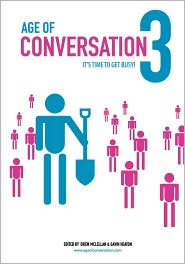Yesterday Naomi Harm give a keynote address at the Lake Geneva Schools Technology Academy, an educational event for elementary, middle school and high school teachers. Although I wasn’t at the event, word reached me about a social media-inspired educational platform called Twiducate. Similar to Yammer (“Twitter for intra-business communication”), Twiducate does not use the already overtaxed Twitter platform, but instead uses many of the principles that make Twitter so useful.
I took a test-drive of Twiducate last night, and two things struck me. The first revelation I had became the title for this post; The developers of Twiducate will be hard-pressed to stop work groups other than classrooms from using the tool. The other revelation is about education reform. Yes, reform won’t happen on its own. But certain facets of it will happen naturally, “seeping in” from the emerging social media zeitgeist. Avoiding new teaching environments like Twiducate will be like holding back a rising tide.
Here’s a video:
So: Will the subversion of this tool be harmful?
I think asking the question is moot. This type of thing will happen regardless. I’m thinking of at least two other examples of where a social network is forced to morph because of the unintended uses those pesky members decide to put it to.
- Fotolog.com started as a primarily photo-sharing site, similar to Flickr.com. But its meteoric growth in the last decade — especially in Chile, Argentina and Brazil — was due to users hopping on to connect and generally socialize. Sharing favorite pics became secondary.
- If the above sounds like dumb luck — like simply being in the right place with the right product (read: social toolset) — you’re right. And you’re also probably thinking of my second example. Although Mark Zuckerburg might posit that Facebook’s growth was all part of some master plan, we shouldn’t forget that he built it in his dorm, six years ago, as merely a “Harvard-thing” — primarily an easy way for him and others to organize study groups.
Check out Twitucate. Do you agree that it’s more than education’s new “Moodle-killer?” Does it have “legs” beyond academia, and is that a good thing?



